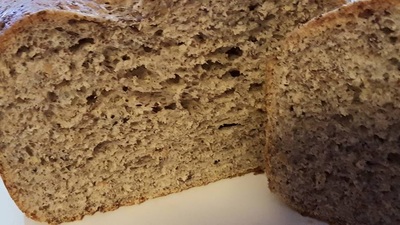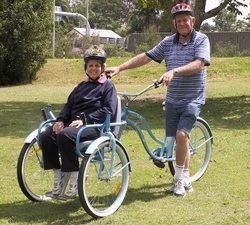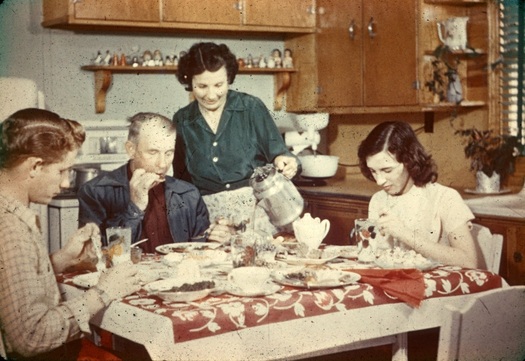We like a hearty bread for toast in the morning. I found that this bread is pretty easy to make, is delicious and makes great toast.
Below is the link to the recipe. It is made in a bread machine but is baked in the oven. I think you could bake it in the machine if you wanted to, using the whole wheat cycle. But since I didn't try it myself, it may take some experimenting on your part to get a good bake using the bread machine. You can also make this dough by hand or with a mixer able to handle bread dough.
I prepared my dough in my Zojirushi bread machine on the dough cycle, then removed it for shaping and the final rise before baking.
I also tweaked the recipe a bit to suit our particular tastes. I used organic ingredients where possible. Instead of whole wheat flour, I substituted am equal amount of HI-Maize High Fiber Flour that is sold by King Arthur Flour. I also added a seed soaker made of 1 Tbsp. of dark flax seed, 1 Tbsp golden flax seed, and 1 tsp of poppy seeds. I covered them with water to soak. The seeds will absorb the water and the mixture will thicken. Because seeds absorb water just adding dry seeds to the dough would require additional water to compensate. Using a seed soaker will help keep the dough hydration where you want it. However, as always, when making yeast dough, you may still need to increase/decrease flour/water amounts depending on your environment. Another change I made was to brush the top of the baked loaf with butter after I removed it from the pan.
http://www.food.com/recipe/flax-seed-bread-bread-machine-143230
King Arthur Flour Hi-Maize High Fiber Flour
http://www.kingarthurflour.com/shop/items/hi-maize-high-fiber-flour-3-lb














 RSS Feed
RSS Feed
